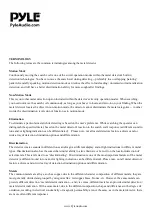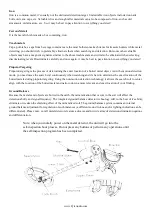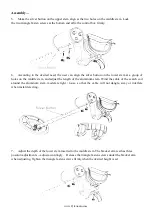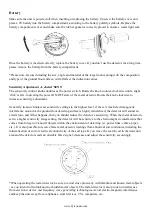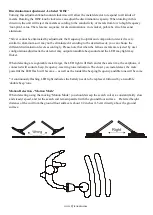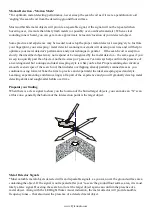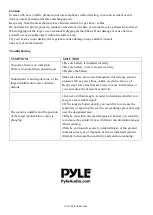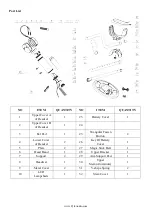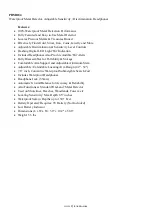
Discrimination Adjustment - Labeled ' DISC'
Turning this adjustment knob counterclockwise will allow the metal detector to respond to all kinds of
metals. Rotating the DISC knob clockwise can adjust the discrimination capacity. When rotating in this
direction, the unit will reject the metals according to the conductivity of metals from low to high frequency
'foot-print' value. The reference sequence for discrimination is: iron, nickel, pull-tabs, zinc, brass and
aluminum.
*Silver cannot be eliminated by adjustment; the frequency footprint and composition detected is very
similar to aluminum so it may not be eliminated. According to the desired needs, you can choose the
different discrimination levels accordingly. Please note that when the ferrous metals are rejected by user
configuration adjustment, the detector may output an audible beep sound and the LED may light may
flicker.
When detecting a recognizable metal target, the LED light will flash and at the same time, the earphone, if
connected will sound a beep, frequency-receiving tone indication. The closer you metal detect, the more
powerful the LED flash will become -- as well as the louder the beeping frequency audible tone will become
*A continuously flashing LED light indicates the battery needs to be replaced, followed by an audible
'double beep' tone.
Motion Detection - 'Motion Mode'
When detecting using the moving 'Motion Mode', you should sweep the search coil at a constant (fairly slow
and steady) speed, and let the search coil remain parallel with the ground floor surface. Preferred height
distance of the coil from the ground floor surface is about 1/2 inches (1.5cm) directly above the ground
surface.
www.PyleAudio.com


